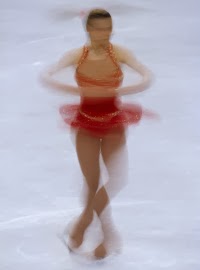|
I need advice, or resources, that will help students answer ‘justify’
or ‘explain’ questions accurately and concisely (our school’s English
department has tried to help, but they don’t seem to grasp the problem),
and how to assess their answers accurately and efficiently.
Next year, I’ll teach five periods of 40 students (four of P1 and one of C (M,E+M)), which has always created lots of grading… but now, with the advent of the new exam, there’ll be more, especially of the ‘justify’ and ‘explain’ type. What do you do to improve your student’s answers and your assessment of them, while saving time? |
|
Kirby, I sat next to Rebecca last year and scored that pilot test for
Physics 1 and Physics 2. Here are some do's and don't tips for everyone.
(1) Don't rewrite the question in an introductory paragraph. You are
wasting precious space in the test booklet that gets you no points. Do
use a label to shortcut your introduction but don't expect that label to
earn you a single point. Rebecca said, "There are no more skinny
points." In the old days, merely mentioning things like right-hand rule,
Lenz's Law, Kirchoff's Junction Rule, Newton's Shell Theorem and so
forth would get you the justification point. No more. (2) The
justifcation point now comes from application of the label. Deborah
says, "If you can't accomplish this in three sentences or less then you
are probably not going to get the point." More importantly, the student
is also losing time that could be spent getting more points else where.
An example here would be something like, "induced current will flow in a
direction to replace flux loss (or cancel flux gain). In order to
accomplish this, the right hand curl rule indicates that current flow
must be clockwise." I would suggest that you have your students list
maximum of four points in bullet form to begin on test day. The first
bullet should be (i) label point that applies to this justification (ii)
connect the label to the cause (iii) connect the label to the effect
(iv) connect the label to the conclusion through physical application.
Many students miss this last point and merely wound up repeating their
conclusion. Award points for every bullet that they mention. Take off
points for restating the question. I know extinguisment doesn't work
but.. I have also considered giving them one essay question the night
before just because our kids seem to write physics explanations like a
five paragraph essay. Hope this is not redundant from past threads.
I would have added a little more but the post was too long. Here is the rest. You can take some of the old AP Physics B FRQ's and use them to make practice problems. However, the problem with the old AP Physics B problems is that the changes always come at the end, rather than the beginning of the problem. Use the old images and move the change to the beginning of the problem. Consider the 2013 AP B FRQ where you had the catapult type problem and the mass was changed at the end of the problem and students had to explain the change in the range of the projectile. Practice that problem specifically. Tell the students to use "inertia" in their explanation. Do this when you are finishing up the Newton's Laws Chapter. After they do that, return to it again after the Work-Energy chapter. Have them repeat their justification using the Work-Energy Theorem instead of Newton's Laws. Then have a third go using momentum and impulse after you finish the chapter on momentum. Although the pulley makes the third approach more challenging it should help the students to synthesize three chapters of mechanics. Two more thoughts- (1) Look up T.I.P.E.R. questions and try to modify old AP Physics B FRQ's into those suggested formats. But move the change to the beginning and demand physical explanation without using mathematical logic or symbols. Your qualitative/quantitative practice can come from those old images but look at the pilot exam next month before you try this. (2) Start the year with bullets for the rubric and then try to grow your students into more complete and fuller explanations as the year passes. You can try tycphysics.org/tipers.htm I don't know how to make this an active link yet. |


.gif)
